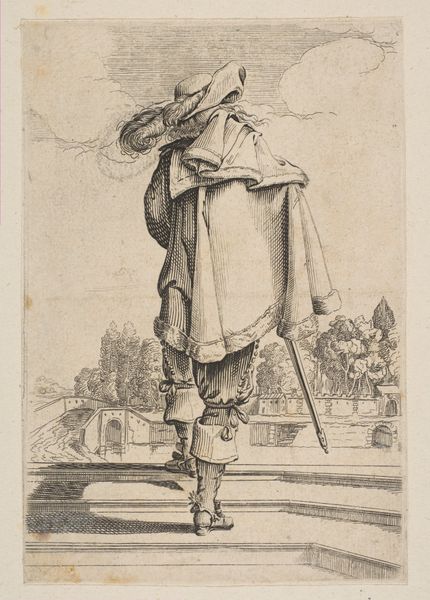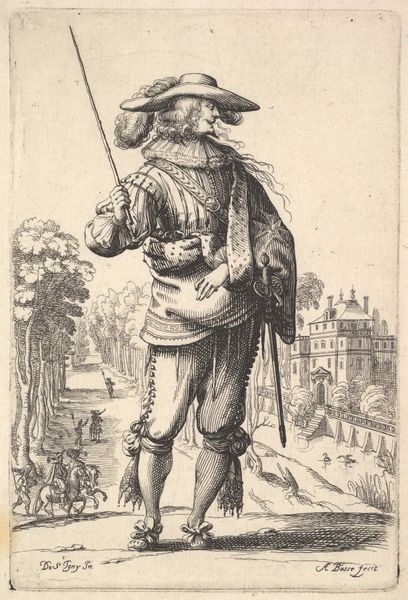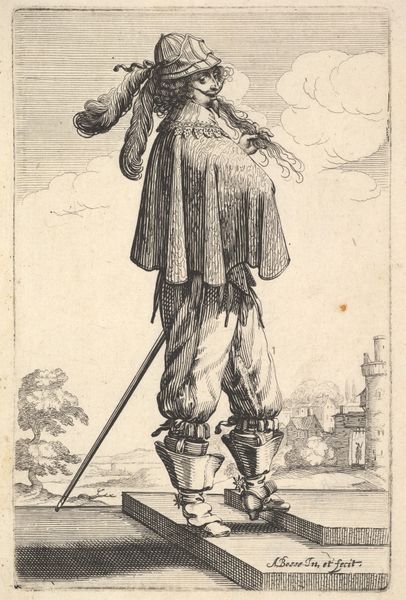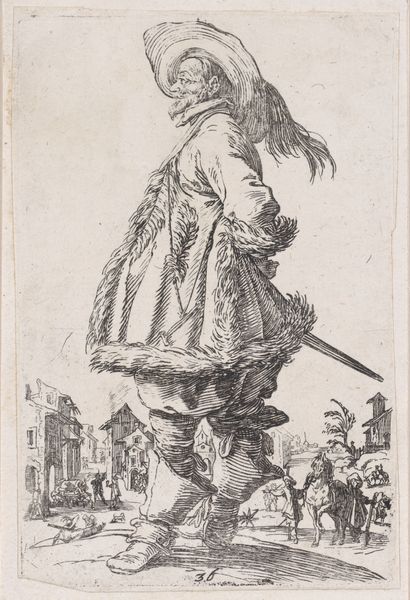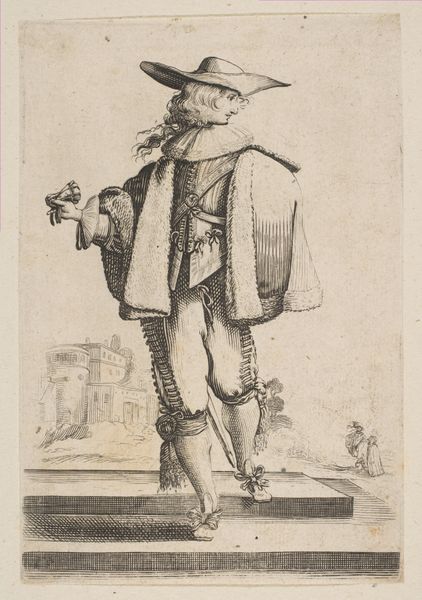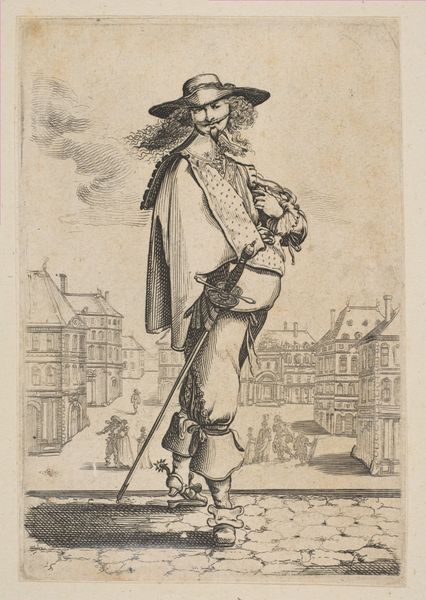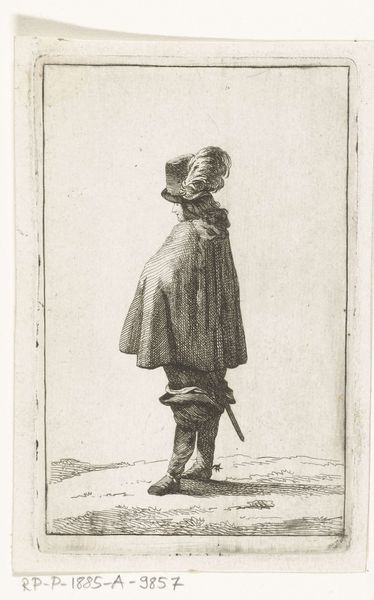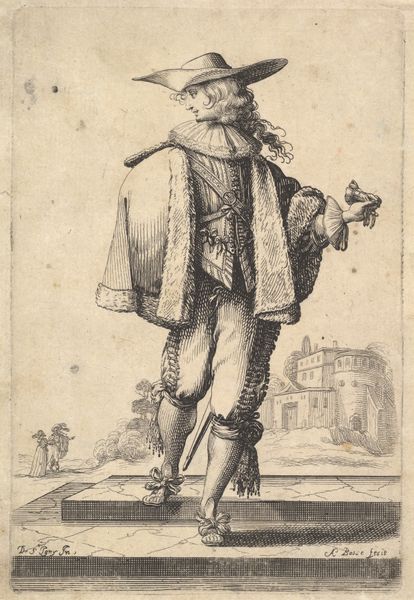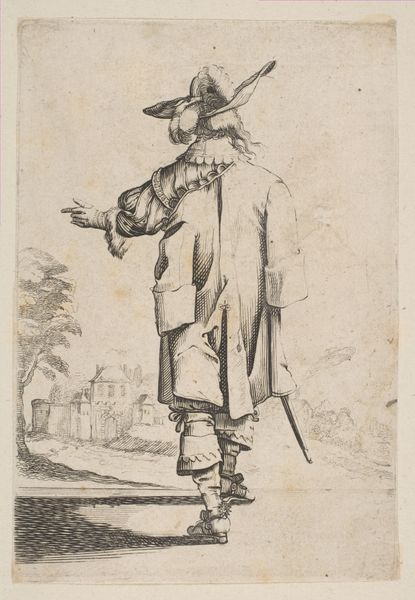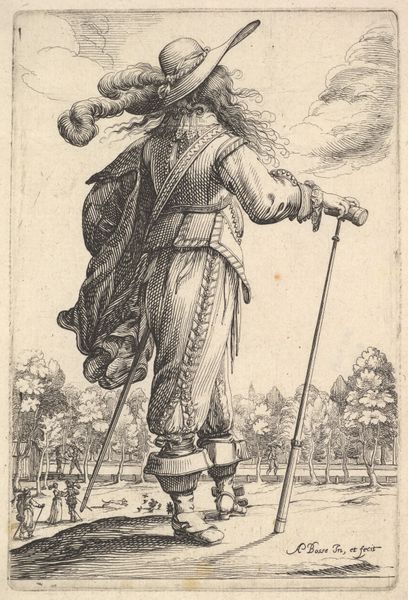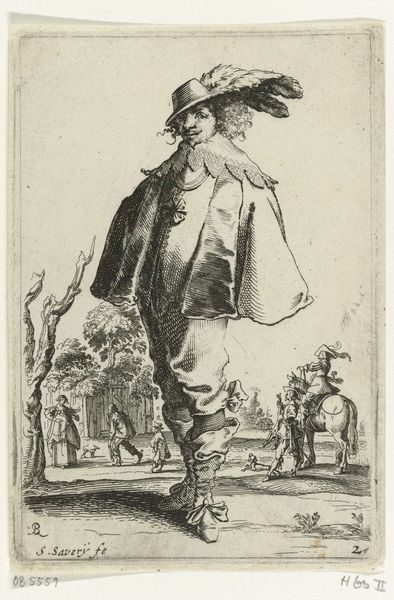
A gentleman, seen from behind, walking up a parapet, with a cloak over his left shoulder, wearing a plumed hat and boots with spurs, from "The Garden of the French Nobles In Which One Can Pick Up Their Way of Dressing" 1629
0:00
0:00
drawing, print, engraving
#
drawing
#
baroque
# print
#
landscape
#
figuration
#
engraving
Dimensions: Sheet: 7 7/16 × 5 1/16 in. (18.9 × 12.8 cm) Plate: 5 9/16 × 3 3/4 in. (14.1 × 9.5 cm)
Copyright: Public Domain
Editor: This engraving from 1629, titled "A gentleman, seen from behind, walking up a parapet," by Abraham Bosse, has an intriguing almost melancholy air about it, don't you think? He looks like he's contemplating something as he overlooks that lovely garden. What stands out to you when you see this piece? Curator: It’s fascinating how Bosse uses this solitary figure to represent the ideal of the French noble at the time. Consider the print's title – "The Garden of the French Nobles In Which One Can Pick Up Their Way of Dressing.” This wasn’t just about fashion, but projecting social status and authority through appearance. The figure's turned back, in particular, is interesting. What message do you think this communicates, if he hides his face? Editor: Perhaps it's meant to invite viewers to imagine themselves in his place, enjoying the refined lifestyle and elegant clothing. The attire almost becomes a symbol. Curator: Precisely. Bosse's work speaks to the construction of identity in the 17th century through material culture. Notice also how the setting reinforces this ideal: the ordered garden, a backdrop showcasing control over nature itself. Where do you think this control extends to, within French society? Editor: To people? I see how the figure’s elevated position looking over a constructed space communicates dominance. It reminds us that imagery often reflects the power structures of the time. Curator: Indeed. These prints were a form of visual propaganda, normalizing and aestheticizing aristocratic dominance. Are there contemporary equivalents in the way we present ourselves and the spaces we inhabit? Editor: Oh, that’s such a relevant question for social media! This makes me look at old portraits with completely fresh eyes. Curator: Absolutely. It is also crucial to critically analyze images, both past and present, regarding power dynamics and ideology that inform how we perceive the world. Editor: That's definitely given me a lot to think about, I'll be viewing things through a new lens now!
Comments
No comments
Be the first to comment and join the conversation on the ultimate creative platform.
